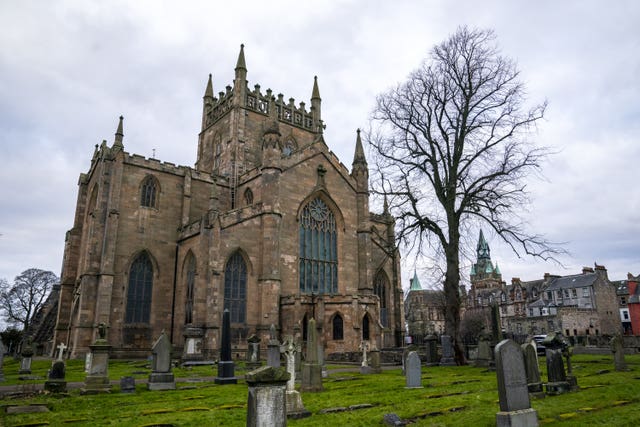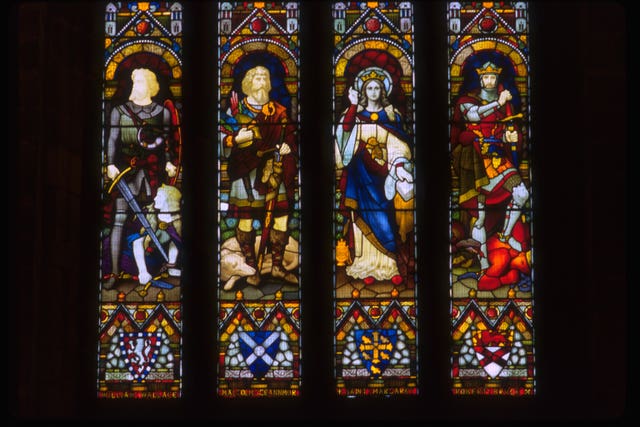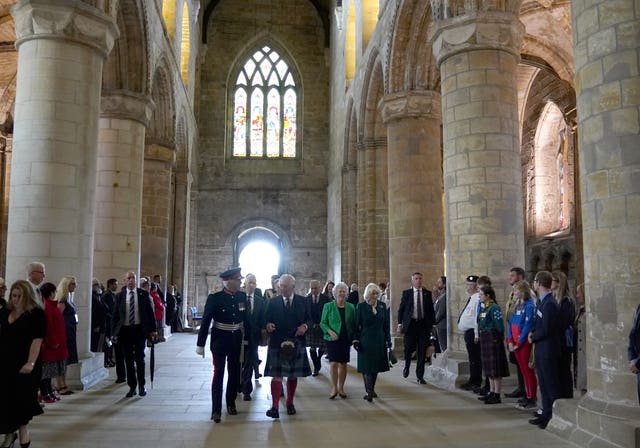Historic church facing ‘eye-watering’ £8 million in upgrade bills, kirk says
A JustGiving page and consultation have been launched to help safeguard the future of Dunfermline Abbey Church.

A consultation has been launched to help safeguard the future of a historic abbey that contains the bones of King Robert the Bruce amid an “eye-watering” projected £8 million in development bills.
The Abbey Church in Dunfermline attracts more than 40,000 visitors a year, according the the Church of Scotland, and has attracted kings, queens and pilgrims from all over the world.
However the kirk, which is more than 950 years old, is facing a repair bill of £4 million over the next three to five years in order to ensure it stays wind and watertight.
Local church leaders estimate that a development plan to upgrade the church facilities will cost an additional £4 million.

The Church of Scotland says the estimated repair and upgrade costs are based on surveys carried out by specialist companies.
An exhibition on the role of the church in the local community and its history will be held at Dunfermline Carnegie Library and Galleries from March 22 to April 6.
Visitors will have the opportunity to give their views on the future of the building.
They will then be invited to attend an event at the Abbey church on April 5 to discuss proposals to protect it for future generations.

The kirk, which receives no public funding, has set up a JustGiving page for donations.
The Abbey, founded by Queen Margaret in the 11th century, has been described as Scotland’s equivalent to Westminster Abbey in London and the Basilica of Saint-Denis, Paris.
Abbey Church of Dunfermline minister Rev Dr MaryAnn Rennie said: “These are eye-watering sums of money.
“We have a congregation of 425 and up until now, the burden has fallen on them to fund repairs and improvements as well as secure small grants from funding bodies such as The Carnegie (Dunfermline) Trust.

“However, this is an unsustainable funding model.
“Congregations of buildings of national importance should not be solely responsible for the bulk of repair, maintenance and sustainability of a historic building of this standing.
“Our church building is a unique icon and the tower, with the lettering King Robert the Bruce, is a landmark and synonymous with the city.”
She added: “Our rich history attracts visitors and pilgrims from all over the world.
“That’s why we are opening a conversation with the local community, key organisations and those with an interest about how we go forward with the building.”
Queen Margaret’s son, King David I, later paid for an extension, turning it into a Benedictine Abbey.
In 1320, King Robert the Bruce funded the completion and upgrading of the monastery and guesthouses and in the 1560s Queen Mary funded further major development work to the palace and nave.
In October 2022, the King and Queen visited, when they marked Dunfermline becoming Scotland’s eighth and newest city.
It was the King’s first official engagement after ascending the throne on the death of his mother, Queen Elizabeth II.
Ms Rennie said she hopes the people of Dunfermline and the wider country want to see the building saved.
She added: “It has a place in people’s hearts, but we have to move the building forward.
“It’s no longer enough to have it only as a place of worship.
“We want to ensure it continues to fulfil its original intent of being a space for community, refuge and education at the heart of Dunfermline for the town, visitors and pilgrims for the foreseeable future.
“However, to achieve this we need to not only repair the building to keep it wind and water-tight but also adapt it whilst also maintaining its dignity and historical features.
“A lift, up-to-date heating and lighting, more toilets, meeting rooms for community groups and church groups to use, flexible seating provision that allows a range of events to take place.
“We want this building to be at the heart of Dunfermline and we want everyone with a connection to the city, whether a distant relative of Robert the Bruce, a tourist, a pilgrim, a resident or a member of the congregation, to come with us on this journey.”
To donate to the church, click here.





